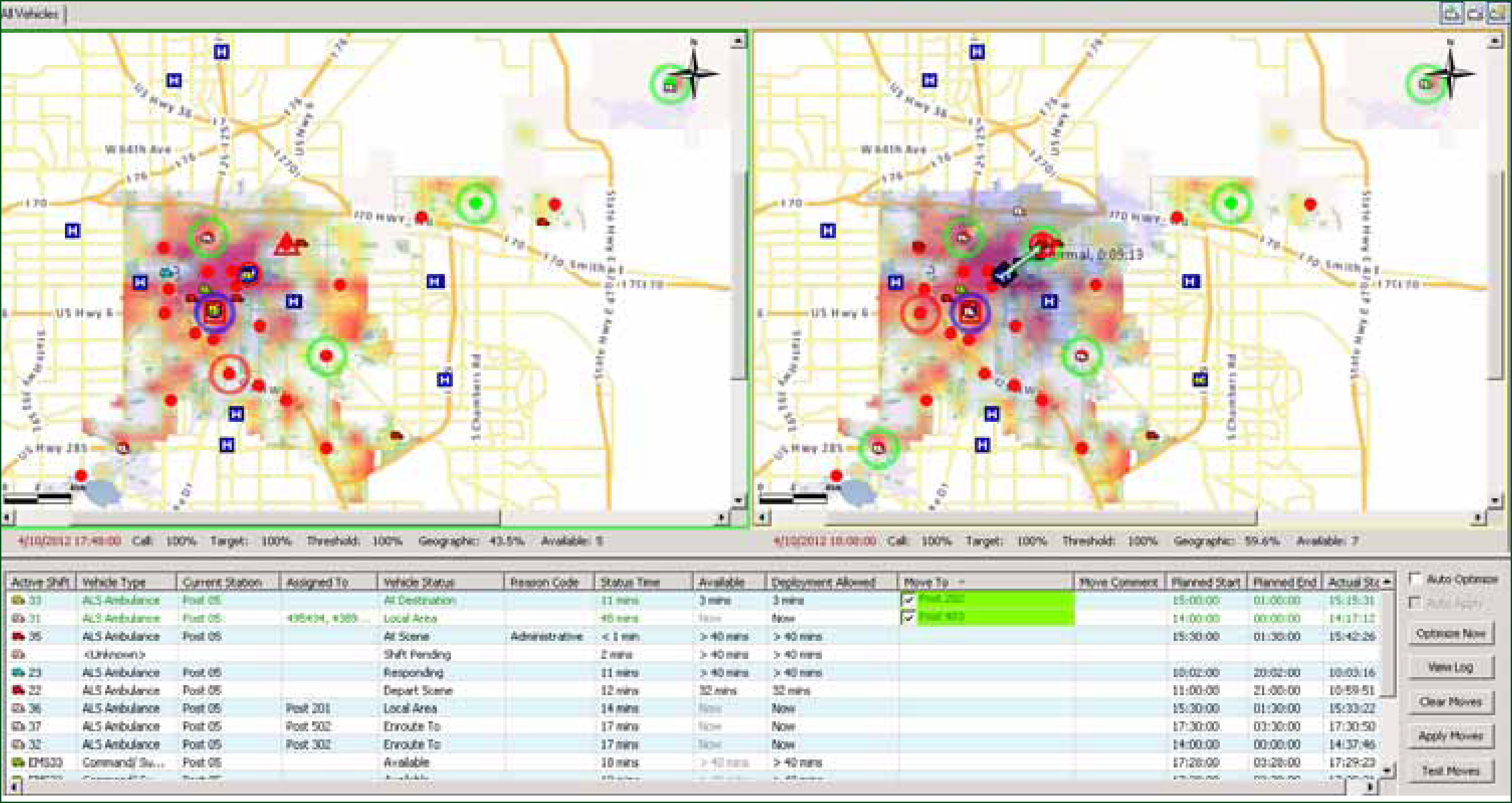
Emergency Medical Services (EMS) organisations worldwide are dealing with a diverse but common set of challenges. In discussions with colleagues throughout Europe and North America, the precise descriptions or the relative priority of the challenges varies but the themes are remarkably consistent.
The communities that many agencies serve have an expectation of increasing levels of performance. In a world with near instant gratification for a whole range of needs and desires, the perception that the response to an emergency should be faster is not surprising. This is paired with an increasing need for EMS services within our communities as populations grow and age, stagnant or decreasing budgets and, often times, a wholly unrealistic level of performance expectation from elected and appointed officials based upon the level of financial support that has been granted.
It is, at best, a challenging time to be leading an emergency medical services organisation. How we have done business in the past simply isn't good enough within today's environment and we need to be investing in technologies that allow organisational leadership to make informed, realistic and effective decisions related to system structure and performance.
Many EMS organisations have made admirable investments in new clinical and patient-handling technologies, increasing clinical effectiveness and patient and provider safety. The time has come, however, for organisations to invest in strategic level system-planning technologies and leverage the developments within the realms of system management and decision-support solutions.
The planning and system-management technologies available to today's EMS leader are rapidly evolving. Consider the experience of a sophisticated, all ALS EMS organisation within the central United States. The organisation's leadership team realised their need to have better tools as early as 2005. Their challenge was to effectively plan for increasing response volumes, changes in health care infrastructure and a growing service area, but they were constrained by the limited capabilities of spreadsheets and statistical analysis paired with a limited geospatial capability.
Over the course of the next several years, they conducted a comprehensive technology scan to identify and evaluate best-in-class technologies for strategic system design and evaluation as well as real-time system performance.
Late in 2008 they began reviewing and evaluating two new technologies recently introduced into the United States by The Optima Corporation.
Now known as Optima predict and Optima live, these solutions offered a unique combination of powerful system analytical capabilities (both standard statistical and geospatial), mathematical optimisation tools for both planning and real-time system management, and a technology known as discrete event simulation. Further enhanced with the capability to provide flexible, system-driven decision support for communications centre personnel, system leadership felt they had identified their solution. Through a State of Colorado grant programme for EMS, the agency was able to successfully procure both solutions in 2009 and they were placed in service in 2010.
These solutions are not ‘EMS Planning and System Management for Dummies,’ they are a serious investment that requires a willingness within an organisation to examine every aspect of how you do business and challenge long held ‘truths’ of EMS system design and function. Historically, the lack of effective and powerful planning solutions has resulted in a great deal of anecdotal decision-making. While that is a comfortable place for many of us within EMS, what we have started to discover is that many of our assumptions were wrong.

Optimisation and simulation-based planning tools allow agencies to test every aspect of system design. Planning teams can examine strategies regarding response methodology, deployment, and transport destinations, even approaches around the use of BLS versus ALS response and transport resources. The use of these types of technologies has also helped agencies realise that decisions ceased being anecdotal and transitioned to being data-driven. Debate and creativity are encouraged and everyone's ideas can be examined, evaluated and compared to the performance of alternate strategies. The planning process is transparent and participative.
Our demonstration agency has seen real impacts as well. They have been able to maintain system performance despite increases in volume on an annual basis and no corresponding increase in funded unit hours. Smarter design and distribution, modeled within tool, has allowed them to extract every bit of capability and performance from the current system. Perhaps most importantly, they have been able to demonstrate this ongoing improvement in efficiency and use it as the foundation for future budget requests. The confidence they have engendered in the leadership of their parent organisation, through aggressive use of planning technologies, substantially increases the willingness of the executive to further invest in the system.
The enhanced system design was paired with real-time deployment optimisation provided by Optima live (predict's partner application). This has allowed the agency to remain stable in a resource-constrained environment. Internally, they firmly believe that their investment in these tools has been a major factor in the performance of the system and the service provided to the community. An additional key aspect of the technology has been the ability for the agency to incorporate important human factors considerations related to workload, deployment activities and physical safety. Personnel are our most important and substantial investment; the technologies we choose should allow us to protect them while achieving a sensible balance of effectiveness, efficiency and quality of work life.
In discussions with the agency leadership, moving into the future, they will be evaluating several key strategic decisions. This includes the need to introduce a second logistics/deployment centre to serve a rapidly growing and difficult to serve area outside of the city centre. Originally anchored by major transportation infrastructure, the addition of a new light rail line, substantial mixed use development and a challenging geography have created a considerable pressure point within the system. Where to locate it, which and how many resources to stage in this location, the impact on the current deployment model, cost, and the overall impact on system performance are all key factors to evaluate. They will also be looking at a resource enhancement package to address increasing incident volumes and new geographic coverage areas, and may be ready to evaluate the impact of alternative system designs.
They emphasise that the most important factor, however, is that they can do these evaluations in the virtual environment, confident that what they see in the model will faithfully represent what the system experiences. They have confidence in the tools, which empowers them have confidence in their eventual decisions and provides a sound foundation for holistic system management.
